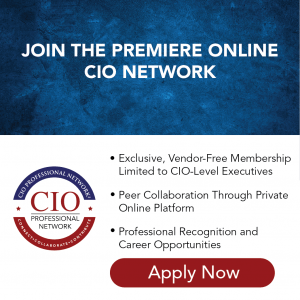Before moving forward with selecting the ERP that will be right for your organization, be sure that you are ready. In my last article, I discussed the prerequisites for a successful software selection and implementation. Here I will discuss the process we used to make this difficult but critically important decision.
Leverage the Implementation Partners
In developing the RFP that we would send to potential solution providers, we requested each of them to select an implementation partner. We wanted a response from the solution provider about how the software would meet our requirements. We also wanted to know what the implementation provider would do to maximize the chances of our success. This request enabled us to have a clear picture of the entire implementation process as well as the software. Also, it encouraged the solution providers to recommend the best implementation partner since they would be a package deal. Finally, it enabled us to evaluate both the implementation costs and the ongoing subscription price. We didn’t want to select an affordable product that would be expensive to implement or a costly solution with a cheap implementation.
Be as Objective as Possible
After we sent out the RFP, we took the requirements to create an objective scorecard that we would use to evaluate each solution. I mentioned this in my previous article but wanted to explain in detail how we developed it. We wanted to be as objective as possible and not make a decision because of a slick demo or charismatic sales team. We started with our goals for the project and gave a percentage weight to each of them. Here’s what that looked like:
- Implementation Cost – 15%
- Ongoing cost – 15%
- Requirements met – 20%
- Integration requirements (the fewer integrations, the higher the score) – 15%
- Ease of use – 20%
- References – 10%
- Post-implementation support model – 5%
Ease of use was the most subjective of all of the requirements and was difficult to quantify. I didn’t want to include it; however, the business felt that we should. Spoiler alert, this gave us the most trouble when making the final selection.
To calculate the requirements score, we weighted each of the requirements as:
- 3 – Must have
- 2 – Nice to have
- 1 – Wishlist
We scored each requirement as follows:
- 10 points – Fully meets the requirement
- 7 points – Partially meets the requirement
- 3 points – Additional cost or customization to meet the requirement
- 1 point – Does not meet the requirement
This process enabled us to multiply the weight by the score for each requirement, add them all up, and divide by the total possible points to come up with a percentage of the total. This scorecard format has become a standard part of each software selection project.

Evaluate the Responses
After we received all of the RFP responses, each of the sponsors and business leads used the scorecard to evaluate each one. We wanted to narrow down the list to three vendors to bring in to do full-day demos of their software. We had blocked off days on people’s calendars before sending out the RFP because it was challenging to find full days where everyone was available. The HR team felt very strongly about one of the HR-only solutions, so we selected four vendors to do on-site demos.
Pay Attention!
It was critical for everyone evaluating the on-site demos not to be distracted during the presentations. That sounds obvious, but people easily get distracted by their cell phones or computer without setting expectations. We didn’t want anyone to miss anything and then make an uninformed decision about the final solution. So, we printed out the requirements and gave people pens to take notes throughout the day. We also made sure we included adequate breaks so people would not lose their focus due to fatigue.
The Final Decision
After the on-site demos, we had everyone update their scorecards based on what they had seen and heard. Then, we came together to discuss how each person had ranked them intending to come to a consensus. We were pretty sure which solution we wanted, but the employee scheduling solution was inadequate. So, we decided to find an add-on for scheduling that the solution provider recommended. After seeing the scheduling add-on that made the most sense for the business, we did a final presentation to the sponsors and made our decision.
Getting the Best Price
Throughout my career, I have learned that it never hurts to ask for a deeper discount.
From my experience, I’m pretty sure vendors know this and don’t give you their absolute best and final price in their response to the RFP. As a result, I’ve always been able to get a better deal than what the vendor initially presented. In this case, I teamed up with our procurement agent, who had helped put together the RFP. We set up a lunch with the sales rep and her boss to present us their Super BAFO (best and final offer). During lunch, we discussed how this was going to be a long-term business relationship since we were looking to sign a seven-year agreement. We were also respectful, saying that we knew that the price needed to be fair for both parties. In the end, we negotiated a final cost that was almost $1 million less over the life of the contract than what they had in their RFP response.

Seal the Deal
Now that we had chosen the vendor and negotiated the best price, the last step was to sign the contracts with the software provider and implementation partner. This process took much longer than I expected. We decided on October 1st but did not sign the software contract until the day after Thanksgiving. The contract for the implementation partner took even longer. This project would be the most expensive in the organization’s history, so everyone wanted to ensure that we were mitigating the risks of going over budget, missing our target go-live date, or ending up with a solution that was not what we expected. My only advice for this part of the process is to be patient and make sure each of the stakeholders feels heard. It was essential for the project’s success to reach a consensus on the agreements.
Final Thoughts
We used this software selection experience to create a repeatable process that we could use for future projects. In addition, the process has helped us consistently select the right software solutions for the organization.
While all technical details are essential, the most critical part is engaging and understanding your stakeholders.
As the one leading the software selection process, you need to understand and navigate each of the stakeholders’ unique needs. If you can successfully do that, you will pick the right solution and have the support you need from the sponsors to maximize your chances of a successful implementation.







